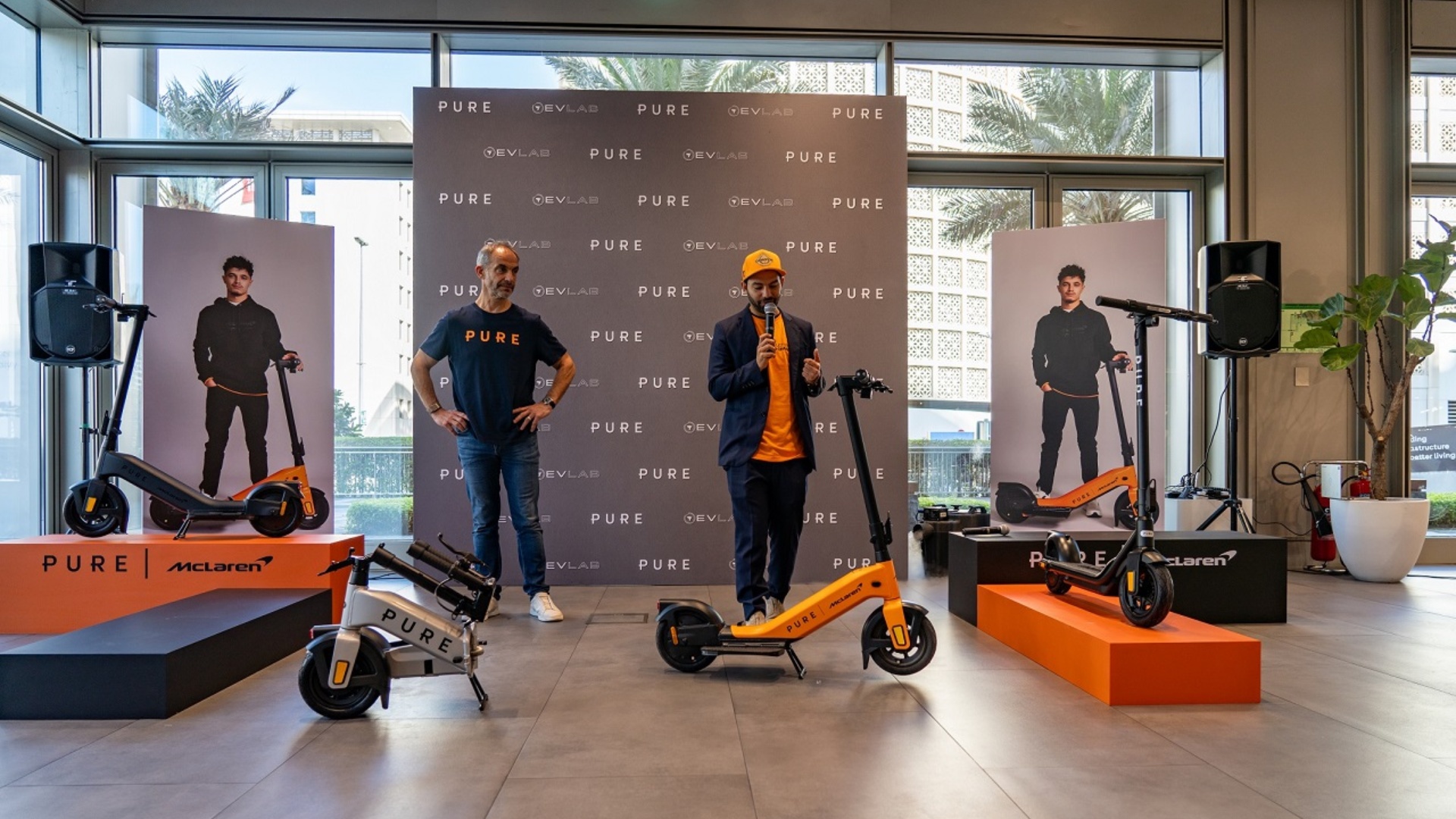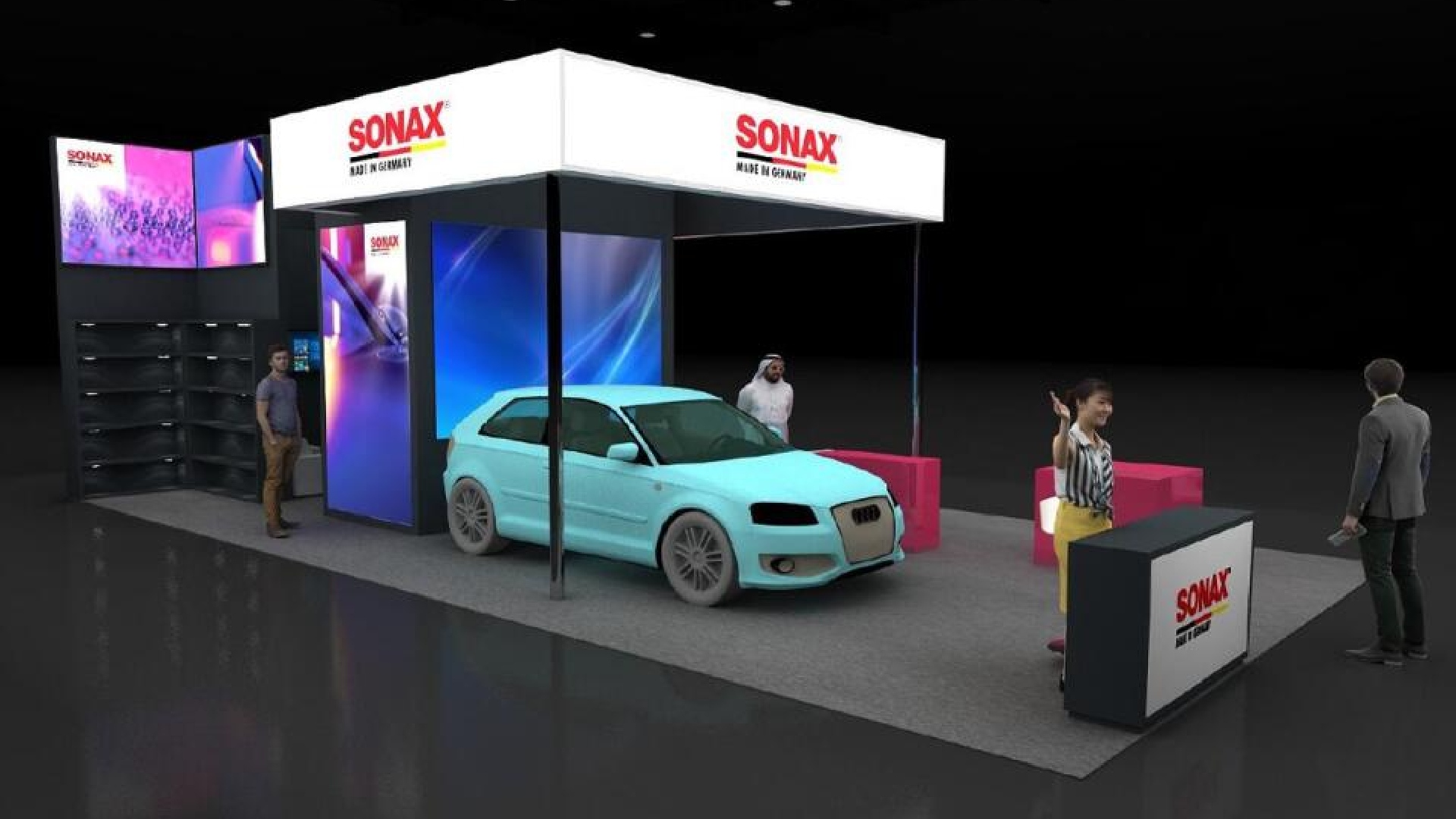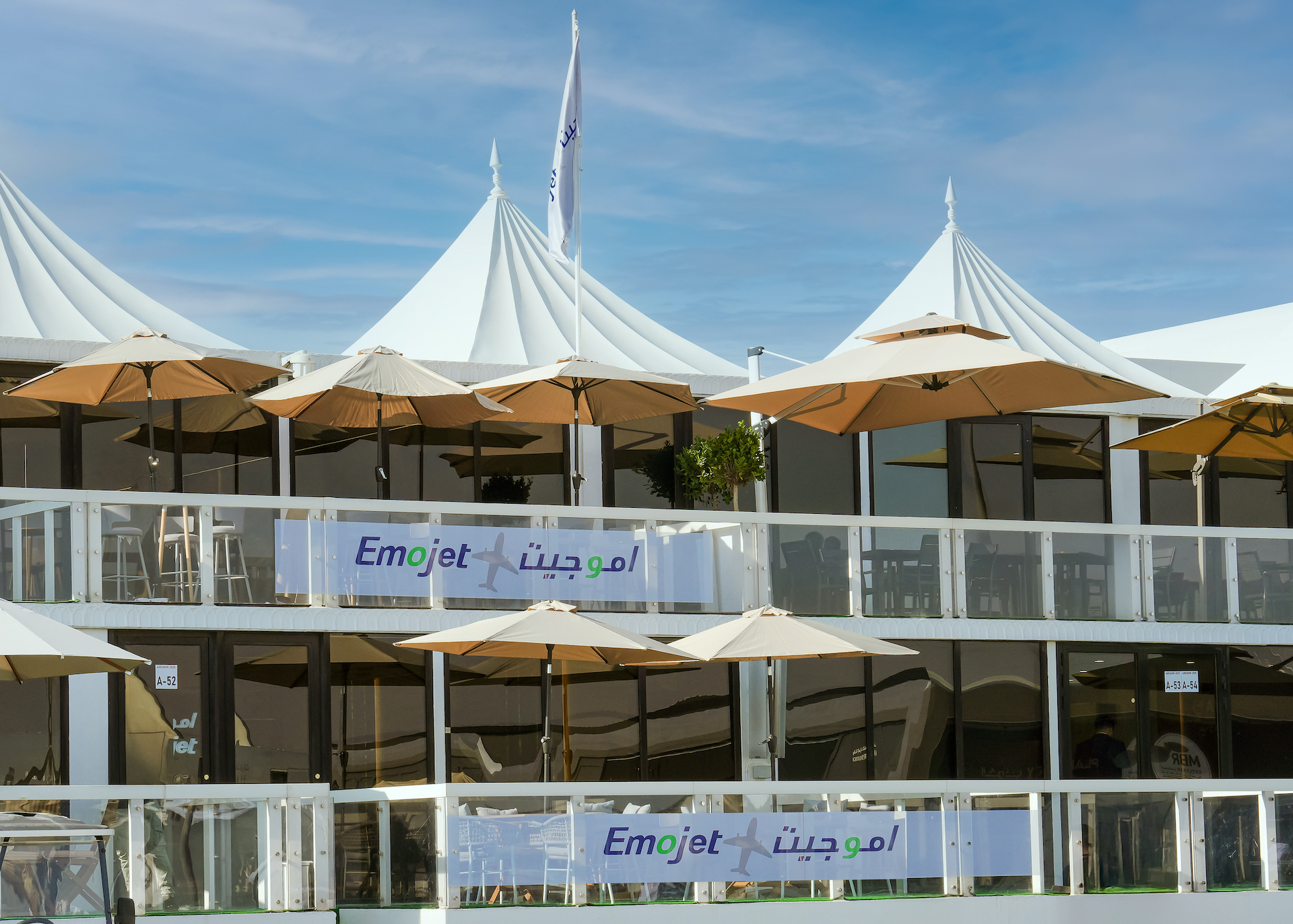Automotive
From Sand to Street: Seven Decades of The Nissan Patrol’s Grit and Glory

Discover the history of the beast that eats boulders for breakfast and smokes tarmac for dinner.
From Australia’s Outback to the Arabian dunes, the Nissan Patrol is an unstoppable machine that redefined rugged. Over seven decades and generations, the Nissan Patrol has gained worldwide reverence for its immense off-roading prowess and rock-solid ruggedness. Over this part of the green globe, the Patrol is a true icon with a legendary stature and cult following. It has remained one of the best-selling models in the Middle East for quite a long time now. In 2023, the Patrol was the second-best-selling car model in the UAE, second only to the Nissan Sunny. We expect this success streak to continue with the newly introduced, latest, and arguably the greatest seventh-generation Patrol. But then, have you ever wondered how a rugged SUV managed to achieve such a high degree of respect and veneration? To comprehend that, you should gain a full understanding of the war-battling, dune-bashing, turbo-whistling history of this legendary SUV. Let’s dissect the annals of the Nissan Patrol, generation by generation.
First Generation (4W60) 1951-1960: The One That Conquered Mount Fuji
The original Nissan Patrol was an old-school midsize off-roader. It was very much redolent of the Willys Jeep, that it was nicknamed the Nissan Jeep. The 4W60 shares its birth year with yet another living legend — the Toyota Land Cruiser.

Initially exclusive to the Japanese market, the 4W60 was exclusively a petrol-powered, 4-wheel-drive vehicle offered in SUV and wagon configurations. The first-gen Nissan Jeep SUVs were powered by a 3.7-liter inline-6 engine, sourced from the Nissan 290 bus of the time, exclusively mated to a 4-speed manual transmission. The original Patrol demonstrated its exceptional off-roading prowess by attaining a groundbreaking achievement. It was the first car to conquer Mount Fuji — a 2,500-meter ascend.
For the first time, the maiden Patrol was bestowed with a refresh in 1955, marking the debut of the 4W61 Patrol. The 4W61 brought forth a few cosmetic changes along with a powertrain upgrade, replacing the 3.7-liter with a new 4.0-liter inline-6. However, the “Nissan Jeep” donned the iconic Patrol appellation for the first time only in 1958, when the 4W65 iteration was introduced. Thus, the legendary nameplate was born, seven years after the birth of the legend itself. The first Patrol arrived at the Middle-Eastern shores in 1957, specifically in Kuwait. It quickly garnered attention and appreciation for its all-terrain capabilities.
Second Generation (60 Series) 1959-1980: The One That Crossed The Simpson Desert
The second generation Nissan Patrol arrived in 1959, with an expanded portfolio comprising more configurations to choose from. Dubbed the 60 Series, the second-gen Nissan Patrol was produced in short, medium, and long wheelbase versions with soft-top hard-top, and wagon body style options.

It was also the first Patrol to be extensively exported to other global markets, including the USA, Australia, Canada, and the Middle East. In fact, the Patrol was the first model to be sold in the U.S. as a Nissan-badged car. All 60 Series Patrol models continued to be powered by a 4.0-liter inline-6 motor, which initially came paired with a 3-speed manual transmission which was later upgraded to a 4-speed manual.

While the first Patrol attained glory by climbing a mountain, the second one crossed a desert to amass eminence. In 1962, a short-wheelbase hard-top Nissan Patrol crossed the Simpson Desert, which spans across the Northern Territory, South Australia, and Queensland in central Australia. The course, traversing an extensive expanse of around 1,100 dunes, was completed in 12 days, and Nissan Australia claims that this Patrol was the first motorized vehicle to achieve this feat.
On another side of the world, the Indian army obtained a license from Nissan to manufacture their own version of the 60 Series Patrol in the early sixties. Named the Nissan Jonga (Jabalpur Ordnance and Guncarriage Assembly), this military-spec Patrol proved itself in the 1965 and 1971 wars and later in several counter-insurgency operations across the country. Further down the line, a civilian version of the Jonga was sold to the public, marking the Patrol’s official (kind of) presence in India too. It is also noteworthy that it was during the era of the 60 Series Patrol, specifically in 1968, when the AW Rostamani Group established Arabian Automobiles, which is now the largest and sole distributor of Nissan cars in the UAE.
Third Generation (160 Series) 1980-1989: The One That Ranked In The Paris-Dakar
The successor to the 60 Series Patrol arrived in 1980 and was christened with the model code 160. The third generation Patrol was the first of its kind to address the needs of and appeal to all kinds of consumers, whereas the first two generations were more purpose-built vehicles.

The 160 Series introduced several novelties, including an automatic transmission, a 5-door body style, a seven-seater cabin layout, and air conditioning. On top of that, the Patrol was now offered with multiple petrol and diesel engine options. The 160 Series can be considered the first Patrol for the masses, as it came outfitted with desirable amenities and convenience features.
The successor to the 60 Series Patrol arrived in 1980 and was christened with the model code 160. The third generation Patrol was the first of its kind to address the needs of and appeal to all kinds of consumers, whereas the first two generations were more purpose-built vehicles. The 160 Series introduced several novelties, including an automatic transmission, a 5-door body style, a seven-seater cabin layout, and air conditioning. On top of that, the Patrol was now offered with multiple petrol and diesel engine options. The 160 Series can be considered the first Patrol for the masses, as it came outfitted with desirable amenities and convenience features.

However, no compromises were made to achieve these positives, as the Patrol continued to exemplify its immense resilience. The third-generation Patrol achieved a milestone in 1987, becoming the first diesel-powered vehicle to ever finish in the top 10 of the fabled Paris Dakar Rally. This mighty victory wasn’t an easy venture for the Patrol. Nissan partnered up with Coca-Cola and enrolled two vehicles enshrouded in a bright yellow Fanta-Limón livery for the 13,000 km race across Europe, Algeria, Mali, Mauritania, and Senegal. Unfortunately, the team’s support truck broke down during the second stage of the rally, while one of the two participant trucks met a catastrophic fate after rolling down a dune. Despite the unfortunate circumstances, the remaining Patrol, managed to complete the race, that too without spares and support. This superlative feat further concreted the Patrol’s reputation as a formidable 4×4 SUV in the global automotive landscape. The third-generation Nissan Patrol was also the first to be called the Nissan Safari in Japan, a name that later gained global fame.
Fourth Generation (Y60) 1989-1997: The One That Blended Luxury With Performance
The fourth generation Nissan Patrol code-named Y60 was a massive innovative leap in terms of comfort and convenience. The most prominent advancement was the upgrade to an all-around coil-spring suspension setup, which was state-of-the-art technology at the time, compared to the leaf-spring setup of its predecessors.

This major milestone in the path of the Patrol’s evolution was also complemented by the addition of power steering and synchro mesh in reverse gear. This trio of upgrades elevated the Nissan Patrol into the luxury segment, while its inherent ruggedness remained intact and unaffected. Nissan essentially uplifted the Patrol into a realm previously dominated by purebred luxury SUVs lik the Range Rover of the time.
Fifth Generation (Y61) 1997- Present: The One Adored By The Middle East

The fifth generation is arguably the most iconic and influential Nissan Patrol ever. Nissan revealed the fifth generation Patrol, code-named Y61, in December 1997, thus transcending the model’s rock-solid reputation into the modern automotive era. It was a comprehensive redesign, introducing a bunch of new powertrain options. The new design was truly revolutionary, featuring a sleeker body shape and a new V-shaped grille. The interior also flaunted upgraded materials, while the feature set was updated with additions including satellite navigation and a reverse camera.

The Y61 Patrol is easily the most iconic, evocative generation of the mighty off-roader, gaining a worldwide reputation for its massive 4.8-liter TB48DE inline-6 motor (massive for an inline-6). Such high-displacement 6-cylinder motors are a rare sight nowadays, and this configuration made the Y61 a creamy smooth SUV with plenty of torque available across the rev range. The sturdy, brawny motor was also exceptionally tuner-friendly, which was properly exploited by enthusiasts, especially in the Middle East. The TB48DE could handle north of 2,000 horsepower, which made it the emperor of both the dunes and roads. The Y61 was so influential in the Middle East that it was reincarnated exclusively for the said market in 2017.

Dubbed the Nissan Patrol Super Safari, the new variant was an updated version that retained the original appeal while adding some touches of modernity. As expected, it was powered by the renowned 4.8-liter inline-6, mated to a 5-speed automatic transmission. While the exterior remained mostly identical to the original Y61, the Super Safari’s interior featured novelties including powered front seats, Bluetooth connectivity, automatic climate control, and more. Followed by the success of the Super Safari, Nissan launched its even cooler 3-door version —also known as the Hard Top version— in the Middle East. While the body style is different, the specifications and feature set remained the same.
Sixth Generation (Y62) 2010-Present: The One With 8 Cylinders And A NISMO Badge

The sixth generation Nissan Patrol code-named Y62 was unveiled in February 2010 in Abu Dhabi. This is the Patrol model we now see abundantly on UAE roads in its various iterations (mostly Platinum and NISMO). The new Patrol was longer and wider than ever, and this time there was no short-wheelbase model on offer. The Patrol had now transformed into a beefier full-size SUV that offered superior cabin space while not compromising on off-roadability. Nissan also introduced a more luxurious, Infiniti-badged version of the Patrol dubbed the QX56 (later the QX80). It was the first Patrol-based vehicle to be sold in the North American market since, 1969. Later on, a direct iteration of the Patrol was introduced in North America in 2017, in the form of the Nissan Armada.
For the first time, the new Patrol was offered with a V8 motor, initially as the standard powertrain and later exclusively as a higher-end option. At first, this 5.6-liter V8 was the only powertrain offered with the Y62 Patrol, which produced 317 horsepower in the lower-spec and came paired with a 5-speed automatic transmission. The same motor churned out 400 horses in the higher-end configuration and was clubbed to a 7-speed automatic. Later on, the base V8 was replaced by a 4.0-liter V6 that cranked out 275 horsepower and 394 nm of torque, while the lower-output V8 powertrain was discontinued. Also, initially, a manual transmission was offered with the base trim.

For 2014, Nissan facelifted the Patrol, adorning it with revised lighting elements, LED headlamps, a new interior shade, and a new set of wheels. The next major facelift happened in 2019 when the Patrol received a new, more angular front and bumpers, giving the mighty off-roader a modern flair and a sportier mien. This facelift also equipped the Patrol with Nissan’s Intelligent Mobility driver-assistance features.
Following this update, in 2021, we saw the birth of something new and paradigm-shifting. Nissan unveiled the first-ever Patrol NISMO variant, exclusive to the GCC countries. The Nissan Patrol NISMO featured signature, NISMO-specific elements including sportier front and rear fascia, a red and black interior with carbon fiber accents, 22-inch 2-tone alloys, and a set of Bilstein shocks for enhanced handling. Powering the Patrol NISMO was the same 5.6-liter V8, which was tuned to produce a higher output of 428 horsepower and 560 nm. Now that the new and latest generation Y63 2025 Nissan Patrol is exclusively V6-powered, the Y62 achieves a future-collectible status, as the only factory-V8-powered Nissan Patrol. This makes the NISMO version even more desirable.
Seventh Generation (Y63) 2024+: The One That Continues The Legacy

Now for the latest flag-bearer of the Patrol legacy, as Nissan calls it — their “symbol of adventure, pride, and resilience in the Middle East”. The all-new Nissan Patrol was unveiled on the 3rd of September. The new generation builds on its immediate predecessor with a wave of modernity inside out, while retaining the Patrol’s inherent boldness and ruggedness. The new Patrol looks cutting edge and comes laden with more advanced underpinnings and technology features.
The new Nissan Patrol is powered exclusively by a pair of V6 powertrain options. The base version is a 3.8-liter naturally aspirated V6, producing 316HP and 386Nm of torque. The heart of the matter is the new high-end powertrain, a 3.5-liter twin-turbo V6 that cranks out 425HP and 700Nm of torque. Both engines come mated to a new 9-speed automatic transmission.

Inside the all-new Patrol, you are treated with all sorts of tech features expected from a contemporary luxury SUV. The infotainment setup has been upgraded with a new 28.6-inch horizontal Monolith display, featuring twin 14.3-inch touchscreens with Google built-in. Complementing this high-end central infotainment system is a 12-speaker Klipsch Premium audio system, offering a proprietary surround sound setup optimized for the Patrol. The latest Patrol is undoubtedly a thorough upgrade over the one it succeeds, and this groundbreaking update endows the Patrol with futuristic characteristics while keeping its rugged DNA intact.
Automotive
EV LAB invests in Pure Electric, kicks off partnership with new lineup of e-scooters

EV LAB, the region’s first omni-channel multi-brand EV store, has invested in Pure Electric, a global specialist in electric micromobility founded by British entrepreneur Adam Norris, and will serve as the brand’s exclusive partner across the Middle East. The partnership kicked off with the launch of Pure Electric’s three new e-scooters in the UAE – Air⁴, Pure x McLaren, and Pure Flex. The collaboration marks a pivotal move towards advancing sustainable transport solutions and supporting the UAE’s goal of reaching Net Zero by 2050.
Under this new venture, EV LAB will feature Pure Electric products across its five stores in the region. This will include the new lineup, primarily designed for urban commuters, lifestyle riders, tech-forward consumers, and micromobility enthusiasts, offering a potent blend of performance, innovation, and purposeful design tailored for the region’s fast-paced city environment. The latest models include the Air⁴, a remastered fourth-generation classic e-ride with a smoother, more powerful ride featuring a 710W motor and 30km range; the Pure x Mclaren finished in McLaren’s iconic orange livery, built with active steering stabilisation, a 900W motor, and a 50km range; and the Pure flex, the world’s most compact scooter featuring a unique forward-facing stance, ultra-compact design, and a 45km range, built for maximum control and stability.
Kevin Chalhoub, CEO and founder of EV LAB, stated, “Collaborating with Pure Electric to launch these unique, state-of-the-art e-scooters in the UAE is an incredible opportunity to drive innovation and sustainability by reducing carbon emissions that will help prevent wider climate problems across the Middle East. Over the past few years, consumers in the region have grown more environmentally conscious and are looking for smarter and greener approaches to travel. These new models will help us advance our mission of creating a dynamic ecosystem in which brands, consumers, and experts can connect through accessible, sustainable, and meaningful electric mobility experiences.”
Micromobility is becoming increasingly popular in the United Arab Emirates due to factors such as the rise in eco-conscious consumers, urbanisation, and traffic congestion within cities. With a compound annual growth rate (CAGR) of 12.2 per cent, the UAE micromobility market is projected to reach USD 2,014.8 million by 2030. Aligning with this growth, EV LAB, as the first multi-brand electric mobility platform in the region, is building a thriving network of EV businesses, experts, and enthusiasts, while offering advanced electric mobility solutions for land, air, and sea, including boats and surfboards, cars, scooters, and air taxis. Through the latest partnership, the company continues to push forward the transition to electric mobility within the UAE and across the Middle East through knowledge exchange and strategic partnerships.
Adam Norris, CEO and Founder of Pure Electric, said: “Pure Electric was formed with the goal of revolutionising personal transport and preparing cities for future generations. Our latest collaboration with EV LAB is a step towards this vision and reinforces our commitment to advancing smarter, greener travel solutions. At Pure Electric, we believe people must begin making thoughtful mobility decisions, not only for practical reasons but also for the wellbeing of our cities and the environment.”
“This new partnership is also of great importance to me, as it comes at the same time my son, Lando, has secured his first Formula 1 World Championship title in Abu Dhabi. I am incredibly proud of these milestones, both as a father and business owner, and look forward to what lies ahead,” Norris added.
Pure Electric, since its founding in 2018, has quickly grown into eight nations owing to its clear vision, precision engineering, and a relentless commitment to delivering quality riding experiences. The company’s global momentum, paired with EV LAB’s regional leadership, opens the door to a new era of micromobility in the country.
Automotive
SONAX ACCELERATES DOUBLE-DIGIT GROWTH ACROSS GCC AND MIDDLE EAST WITH UAE DISTRIBUTOR RAMY AUTOMOTIVE

SONAX GmbH, the global leader in car care solutions, has recorded consistent double-digit growth across the GCC and wider Middle East region, averaging between 10% and 20% over the past five years. This sustained expansion underscores the company’s strong foothold in the region and its position as the number-one premium car care brand, reinforced by a 35-year partnership with its UAE distributor, RAMY Automotive.
Building on this success, SONAX will showcase its next-generation innovations at Automechanika Dubai 2025, where it will unveil two new additions to its Ceramic Coating line, CC Glass and CC Rim. These latest formulations highlight SONAX’s continuous investment in innovation, performance, and product excellence.
“Our continued double-digit growth underscores the strong trust and loyalty that SONAX has built among car enthusiasts and professionals across the UAE,” said Edwin Berberi, Senior Business Development Manager SONAX, GmbH. “At RAMY Automotive, we take pride in representing SONAX in the UAE and strengthening its legacy of excellence in car care. We are committed to further expanding our footprint while upholding the highest standards of quality and customer satisfaction across the region.”
Founded in 1950 in Neuburg, Germany, SONAX has built its reputation on premium quality, continuous research, and technical advancement. Its comprehensive portfolio spans car, motorcycle, bicycle, and industrial care, from manual detailing to automated washing, offering both private and professional users products that meet the highest global standards.
The GCC is one of the fastest-growing markets for high-end vehicle maintenance, driven by discerning customers who own luxury cars and demand superior quality care. As such, SONAX has continued to attract both individual car enthusiasts and commercial clients seeking long-lasting protection and professional-grade efficiency.
“Automechanika Dubai provides the perfect platform to strengthen our connections with customers and partners while introducing our latest innovations tailored for regional needs,” added Berberi. “Our mission remains clear: to deliver premium, sustainable, and high-performance solutions that make every vehicle shine.”
SONAX’s advanced Ceramic Coating products have set industry benchmarks since the launch of Nano Paint Protect in 2006. Today, the brand leads with a complete portfolio that includes CC Vinyl+PPF and CC Plastic+Rubber, and now expands further with the 2026 innovations CC Glass and CC Rim.
As part of its environmental commitment, SONAX integrates sustainability across its operations and product development. The company is ISO 14001 certified for its environmental management system and participates in the Responsible Care initiative, ensuring continuous improvement in environmental, health, and safety standards. Most of its products are made with 99.75% natural ingredients, reflecting its dedication to creating environmentally conscious products without compromising performance.
With a strong partner network across the GCC and Middle East, SONAX is uniquely positioned to serve regional and international customers. Its cooperation with RAMY Automotive in the UAE has been a cornerstone of its regional strategy, ensuring that customers across all markets receive the same quality, service, and reliability synonymous with the SONAX brand.
Automotive
Emarat Showcases Emojet’s Aviation Fuel Leadership at Dubai Airshow 2025

Emirates Petroleum Company PJSC (Emarat), a pioneer in the UAE’s oil and gas industry, will highlight the strength of its aviation fuel business at Dubai Airshow 2025 through its aviation subsidiary, Emojet, one of the leading into-plane fuel service providers at Dubai International Airport and Al Maktoum International Airport (Dubai World Central). Emojet will host airline, airport and industry partners at Chalet A52 from 17–21 November 2025, between 10:00 AM and 5:30 PM at Al Maktoum International Airport.
A key pillar of Emarat’s portfolio, aviation fuel is delivered through Emojet, which has proudly served the UAE’s world-leading aviation industry since 1992. Today, Emojet supplies aviation fuel to many of the world’s leading international airlines at Dubai International Airport and Al Maktoum International Airport, delivering award-winning into-plane services built on safety, reliability and service excellence.
Ali Khalifa Al Shamsi, Chief Executive Officer of Emarat, said, “Dubai Airshow is a natural platform for Emarat and Emojet. For more than three decades, we have been privileged to fuel the growth of the UAE’s aviation sector and support Dubai’s rise as a global hub for passengers and cargo. Through Emojet, we combine best-in-class infrastructure, rigorous safety and operational discipline with a partnership mindset that puts our customers’ network and growth ambitions at the centre. At Dubai Airshow 2025, we look forward to reinforcing our commitment to the aviation ecosystem and exploring new collaborations that will help shape the future of air connectivity in our region.”
At Dubai Airshow 2025, Emojet will focus on deepening existing relationships and building new partnerships with airlines, cargo operators, airports, and logistics players from across the region and beyond. This follows Emojet’s July 2024 agreement with Emirates SkyCargo to supply aviation fuel for the airline’s cargo operations at Al Maktoum International Airport – a model of the strategic collaborations the brand aims to replicate and expand during the show.
Salem Bin Suloom, Vice President – Aviation Sales at Emarat, said, “Emojet’s promise is simple – safe, reliable and efficient fueling, every time. Our customers operate in highly demanding environments, and they rely on us to deliver on-time performance, technical excellence and responsive service across every flight and every turnaround. At Dubai Airshow 2025, our focus is on listening to our partners, understanding their evolving operational needs and identifying new ways we can support them – whether through long-term supply agreements, expanded into-plane services, or new collaborations with airports and operators across the wider region. We warmly invite existing and prospective partners to visit us to discuss how Emojet can fuel their future plans.”
Emojet stands apart through its modern fleet of refuelling equipment, advanced control systems and highly trained operational teams. The company utilises the latest electronic data capture and interface systems to drive efficiency, accuracy and transparency, ensuring that its operations and equipment exceed mandated IATA standards.
-

 Tech News1 year ago
Tech News1 year agoDenodo Bolsters Executive Team by Hiring Christophe Culine as its Chief Revenue Officer
-

 VAR8 months ago
VAR8 months agoMicrosoft Launches New Surface Copilot+ PCs for Business
-

 Tech Interviews2 years ago
Tech Interviews2 years agoNavigating the Cybersecurity Landscape in Hybrid Work Environments
-

 Tech News5 months ago
Tech News5 months agoNothing Launches flagship Nothing Phone (3) and Headphone (1) in theme with the Iconic Museum of the Future in Dubai
-

 Tech News2 years ago
Tech News2 years agoBrighton College Abu Dhabi and Brighton College Al Ain Donate 954 IT Devices in Support of ‘Donate Your Own Device’ Campaign
-

 Editorial1 year ago
Editorial1 year agoCelebrating UAE National Day: A Legacy of Leadership and Technological Innovation
-

 VAR1 year ago
VAR1 year agoSamsung Galaxy Z Fold6 vs Google Pixel 9 Pro Fold: Clash Of The Folding Phenoms
-

 Cover Story9 months ago
Cover Story9 months agoUnifonic Leading the Future of AI-Driven Customer Engagement

























